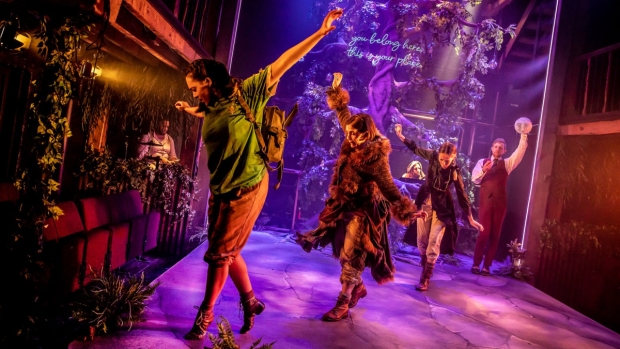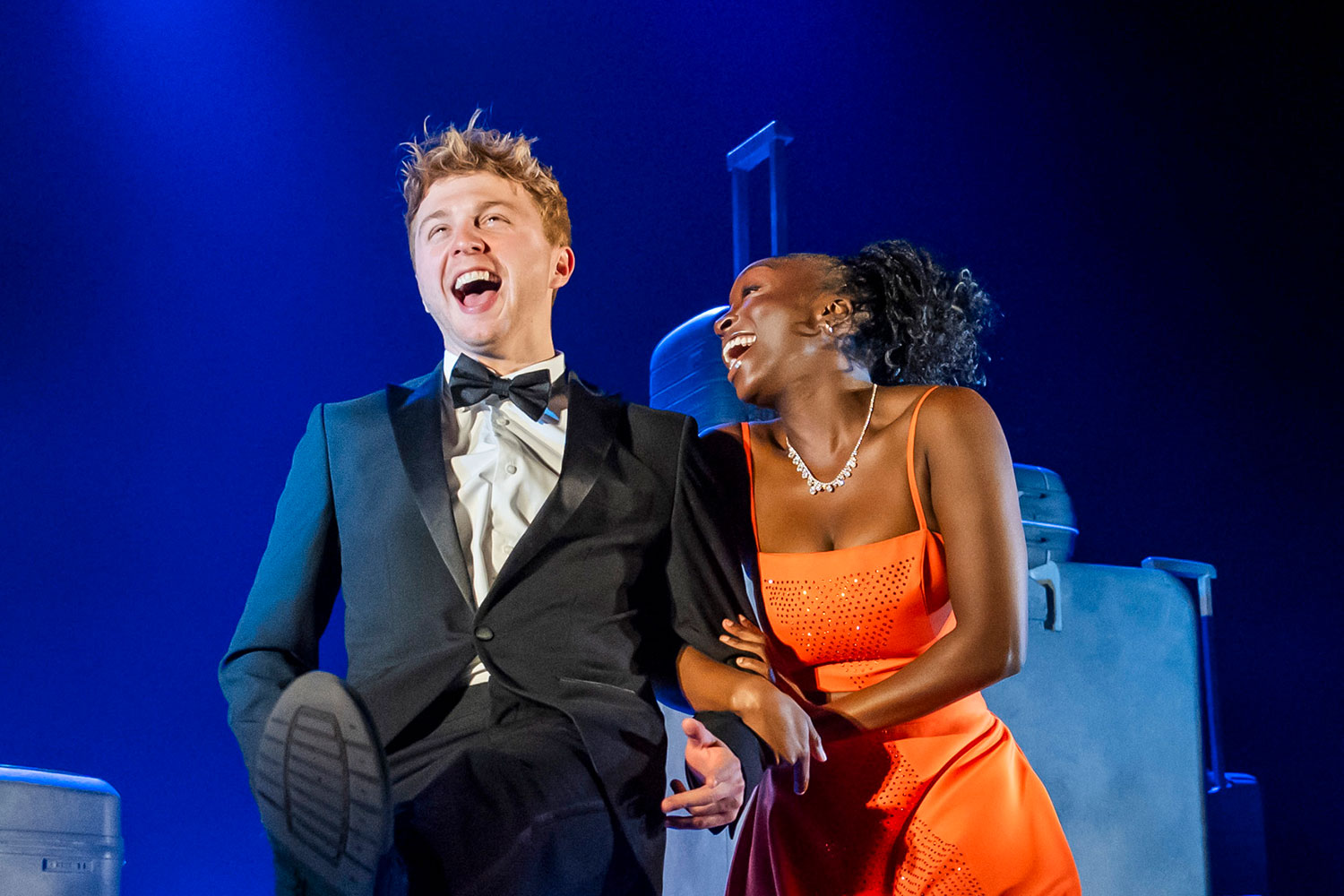The Jungle Book review – a strikingly inclusive and bold reimagining of the Kipling classic

© Pamela Raith
A gnarled tree towers above a jungle clearing adorned with the scrawled neon message "You belong here, this is your place". Its branches open wide like an embrace above a clearing.
It's an unexpected opening for a retelling of Kipling's much-loved tale of the child reared by wolves and taught the ways of the jungle by his reimagined, powerful, usually predatory beasts. Audiences reared on Disney's hugely popular cartoon are in for a surprise. Director/adaptor/choreographer Tom Jackson Greaves has found in Kipling's book a story of what it feels like to be an outsider seeking your place in society.
So from the get-go, his mission is to include his audience—kids and adults—in the storytelling, sharing fun movements and sounds. We are well primed as the company sings the question at the heart of Mowgli's story in a couplet that's become an ear worm for me, thanks to composer Dom Coyote's music, both catchy and poignant: "How do I know who I might be/ When I can't see anyone who looks like me?" (I hope superb and original wordsmith, poet and lyricist Sarah Ashanti will forgive any paraphrasing here).
The whole company of multi-talented actor/musicians throw themselves into the mission of answering that question, sharing a whole lot of joyous fun on the way. Tabaqui, the narrator figure, bounds into the clearing to introduce himself alliteratively (and cheekily!) as "tale teller… bottom biter". With his warm wide grin, flowing locks and robes creating a slightly mysterious air, and a terrific tenor voice, he is an instantly charismatic figure, who charms his audience of all ages into following him into the the jungle and its stories.
And so the story of little Mowgli the abandoned human child adopted by wolves begins with puppets, soon replaced by our actors, first the Wolf parents and pack leader, the Wolf Councillor. Their very posh voices reminiscent of the upper classes of Kipling's Victorian/Edwardian England—and the British Empire—are a subtle and comically clever nod to Kipling.
Indeed, when we meet those two mentors for the adolescent Mowgli, Baloo the Bear and Bagheera the Panther, they are striking suited and booted hybrids of powerful jungle beasts and confident Victorian/Edwardian womanhood. Rowena Lennon's Baloo sports rather more than the bare necessities, a brown fur-trimmed bustle coat over bloomers; and Philippa Hogg's magnificent black velvet close-fitting bustle over matching bloomers gleams like the panther's coat. Jasmine Swan's set and costume designs are strikingly colourful and imaginative, a perfect visual expression of the production's aesthetic.
Their mission is to educate their pupil in the ways of the Jungle and to protect the youngster from the pitiless predations of the apparently all-powerful Tiger Shere Khan (Peter Ashmore, perhaps more pussy cat than pitiless predator).
In eco-friendly green teeshirt and rolled khaki breeches, wide-eyed young Mowgli might look like easy prey for a cruel tiger, but they are a bright young being, eager to learn. Note the pronoun, for Mowgli does indeed identify as ‘they'. Karishma Young‘s extraordinary ‘Little Mo', as they are sometimes endearingly addressed, is a whirlwind of stunning movement and dance, so eloquent that you understand the communication as you marvel at the moves (Young is indeed a contemporary dancer and choreographer).
The other members of this six-strong cast have huge and glorious voices and movement qualities appropriate to every beast they embody. They morph effortlessly between ‘species', while singing, dancing and playing a range of instruments. All six play keys, most at least one other instrument, violins, ukulele and recorder; and Alexander Bean, a huge presence as imposing Councillor Wolf and powerful python Kaa, also plays drum kit, percussion and keys.
In Kipling's original stories, Kaa is a scarily ambiguous character, whom Mowgli must treat with respect and caution, and Shere Khan is a cruel killer. Even the tribe of monkeys that Mowgli joins for a time, prove to be destructive mischief makers. Here, though not exactly toothless, Khan is more bluster than threat; and when the cast morph into monkeys, they clearly relish going ape as party animals in rainbow-coloured feather boas, cooking up a storm.
So whether perching in designer Swan's welcoming tree or dancing in lighting designer Andrew Exeter's warm firelight, the company's life in the jungle is not as much of a scary display of nature red in tooth and claw as Kipling's original. Nonetheless, I hope he would join the enthusiastic audience in relishing Mowgli's journey through the jungle as a life-affirming quest for identity and a wonderfully inclusive seasonal show for all ages.










